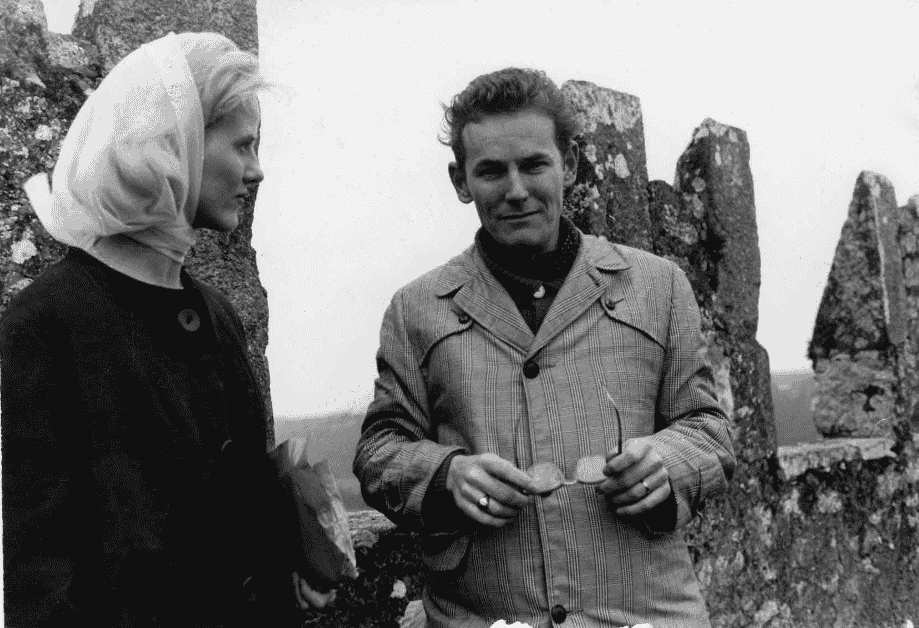Brita Ingegerd Olaisson is most notably recognized as the ex-wife of Gordon Lightfoot, the legendary Canadian singer-songwriter. While her connection to Lightfoot brought her into the public eye, Brita’s life extends beyond her marriage to the iconic musician. Hailing from a Swedish background, Brita has lived a life filled with personal challenges, devotion to her family, and moments of public scrutiny. Though not as widely documented as her famous ex-husband, Brita remains an integral figure in the history of Lightfoot’s personal and professional journey.
This article explores Brita’s family roots, professional life, and her relationship with Gordon Lightfoot, shedding light on a woman whose story deserves attention.
Early Life and Family Background
Brita Ingegerd Olaisson was born in Sweden, a country renowned for its rich cultural heritage and progressive values. While details about her early life remain scarce, her Swedish upbringing likely instilled a deep sense of family and resilience, traits that would define her life later on.
Her transition to life in North America came after she met Gordon Lightfoot, whose music career was flourishing. Together, the couple navigated the challenges of fame, balancing Lightfoot’s demanding career with their family life. Brita’s Swedish roots played a significant role in shaping her identity, influencing her values and approach to life even in a foreign land.

Marriage to Gordon Lightfoot: A Union of Love and Challenges
Brita married Gordon Lightfoot in 1963, a time when his career was gaining momentum. The marriage was a testament to the deep connection the couple shared, though it wasn’t without its difficulties. During their years together, Brita supported Lightfoot through the ups and downs of his musical journey, often serving as a source of stability amidst the chaos of his rising fame.
Their relationship, however, faced significant strains due to the pressures of Lightfoot’s career, long periods of separation, and the challenges of living in the public eye. Brita’s dedication to their family often contrasted with the lifestyle of a touring musician, leading to conflicts that ultimately culminated in their divorce in 1973. Despite the dissolution of their marriage, Brita’s impact on Lightfoot’s life and music is undeniable. Her influence can be felt in several of his songs, including “If You Could Read My Mind,” which reflects on themes of love, loss, and longing.
Life After Divorce: A Journey of Resilience
Following her divorce from Gordon Lightfoot, Brita stepped away from the limelight, focusing on her personal growth and family. She raised their children with care and dedication, ensuring they had a grounded upbringing despite their father’s fame.
Brita’s decision to live a private life allowed her to avoid the intense scrutiny that often accompanies the families of celebrities. She chose to prioritize her well-being and that of her children, demonstrating remarkable strength and independence. While details about her career and personal pursuits post-divorce remain private, Brita’s life serves as a testament to her resilience and ability to forge her own path.

The Legacy of a Woman Behind the Music
Brita Ingegerd Olaisson’s life is an example of the often-unseen influence that partners of public figures have on their careers. While Gordon Lightfoot’s songs and accomplishments are widely celebrated, Brita Ingegerd Olaisson’s support during his formative years was instrumental in shaping his journey. Her role as a wife and mother provided the foundation for Lightfoot’s artistic exploration, even if it came at personal costs.
Her story also serves as a reminder of the emotional complexities that come with being associated with a public figure. Despite the challenges she faced, Brita’s strength and character left an indelible mark on those around her.
Reflection: The Intersection of Fame and Personal Life
Brita Ingegerd Olaisson’s story highlights the intricate balance between personal relationships and the demands of fame. Her marriage to Gordon Lightfoot, though filled with love, also underscored the difficulties that arise when private lives intersect with public personas.
Through her resilience and dedication, Brita emerged as more than just the ex-wife of a music legend. Her journey is one of adaptation, strength, and self-reliance. While much of her life remains private, the glimpses we have reveal a woman of depth and character who made an indelible impact on the people around her.
Conclusion
Brita Ingegerd Olaisson’s life is a story of love, resilience, and quiet strength. While her marriage to Gordon Lightfoot brought her into the public eye, it is her ability to navigate life’s challenges with grace and independence that truly defines her legacy. She remains an enduring figure in Lightfoot’s history, not just as a muse but as a partner who helped shape his life during a critical period.
Her journey serves as a poignant reminder of the complexities of relationships, especially in the shadow of fame. Brita’s decision to embrace privacy and focus on her family after her divorce speaks volumes about her character and priorities.
FAQs
Who is Brita Ingegerd Olaisson?
Brita Ingegerd Olaisson is the ex-wife of Canadian musician Gordon Lightfoot. She is known for her Swedish heritage and her role as a supportive partner during Lightfoot’s early career.
What is Brita’s connection to Gordon Lightfoot’s music?
Brita’s relationship with Lightfoot inspired several of his songs, including the iconic “If You Could Read My Mind,” which reflects themes of love and loss.
Does Brita have children with Gordon Lightfoot?
Yes, Brita and Gordon Lightfoot have children together, though they have largely stayed out of the public eye.
What is known about Brita’s career?
While Brita’s professional life is not widely documented, her primary focus post-divorce was on raising her children and maintaining a private life.
When did Brita and Gordon Lightfoot divorce?
Brita and Gordon Lightfoot divorced in 1973 after a decade of marriage.
What is Brita’s legacy?
Brita’s legacy lies in her resilience and her role in supporting Gordon Lightfoot during a formative period in his career. She remains a figure of quiet strength and grace.




